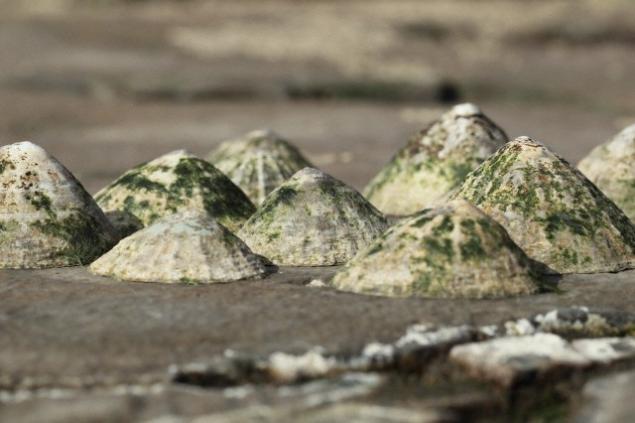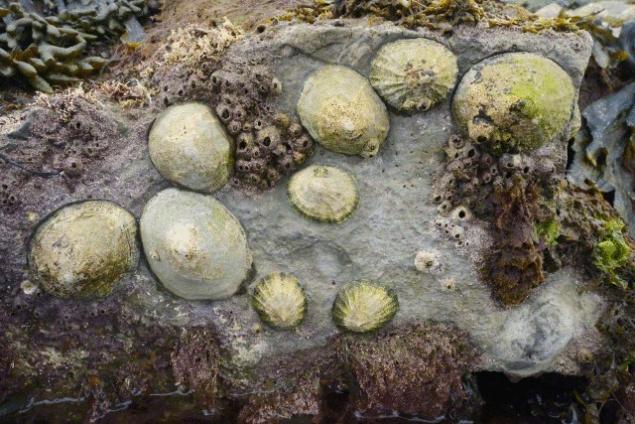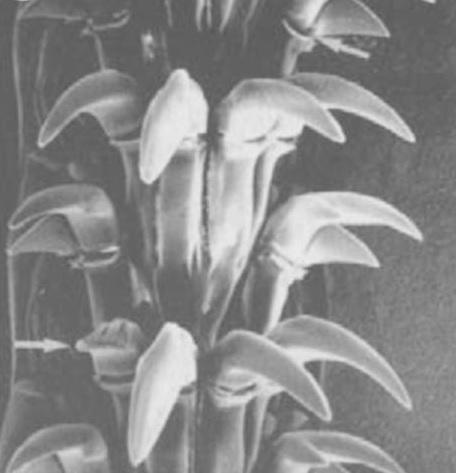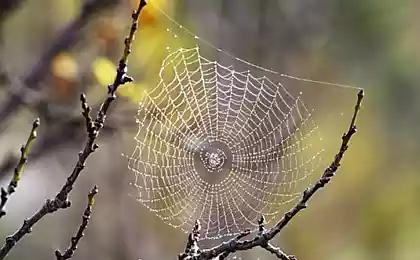444
That is stronger than the web
Among the natural materials, the web is particularly resistant to breaking, it is necessary to apply a force in 1.3 gigapascal (HPa). This is higher than steel, and still was thought that the stronger spider threads in the natural world-nothing.

Sea plate Patella vulgata, side view. (Photo by FLPA / Steve Trewhella / FLPA / Corbis.)

Sea plate Patella vulgata, the top view. (Photo By Nick Upton / Robert Harding World Imagery / Corbis.)

The teeth on the grater-Radul ' sea saucers. (Photo by Asa H. Barber et al.)
However, as written in the Journal of the Royal Society Interface, researchers from the University of London Queen Mary, "the title" here is to be transferred to another material, which is made from teeth of the sea saucers. The so-called sea snails living in the coastal waters of seas and oceans. Their shell isn't twisted in a spiral, and is a simple saucer-like cone, covering the body of a mollusk. They eat that can be scraped off from the surface of the coastal cliffs using a special notched trowel-radula. You would expect that from the constant "glodane stones" teeth of mollusks erased into nothingness, however, nothing of the kind, and here's why: their tensile strength is from 3 to 6.5 GPA, which, as we see, several times more than the web.
If compared with artificial materials, while the saw teeth give graphene, their strength is higher than Kevlar and is comparable to some carbon fibers. Studies have shown that the grater shellfish is composed of nanofibers of iron-containing mineral goethite immersed in the protein-chitin matrix. Perhaps in the future will be able to create an artificial analogue of this material will undoubtedly find wide application, whether in dental prosthetics, or in the defense industry.
published

Sea plate Patella vulgata, side view. (Photo by FLPA / Steve Trewhella / FLPA / Corbis.)

Sea plate Patella vulgata, the top view. (Photo By Nick Upton / Robert Harding World Imagery / Corbis.)

The teeth on the grater-Radul ' sea saucers. (Photo by Asa H. Barber et al.)
However, as written in the Journal of the Royal Society Interface, researchers from the University of London Queen Mary, "the title" here is to be transferred to another material, which is made from teeth of the sea saucers. The so-called sea snails living in the coastal waters of seas and oceans. Their shell isn't twisted in a spiral, and is a simple saucer-like cone, covering the body of a mollusk. They eat that can be scraped off from the surface of the coastal cliffs using a special notched trowel-radula. You would expect that from the constant "glodane stones" teeth of mollusks erased into nothingness, however, nothing of the kind, and here's why: their tensile strength is from 3 to 6.5 GPA, which, as we see, several times more than the web.
If compared with artificial materials, while the saw teeth give graphene, their strength is higher than Kevlar and is comparable to some carbon fibers. Studies have shown that the grater shellfish is composed of nanofibers of iron-containing mineral goethite immersed in the protein-chitin matrix. Perhaps in the future will be able to create an artificial analogue of this material will undoubtedly find wide application, whether in dental prosthetics, or in the defense industry.
published






















